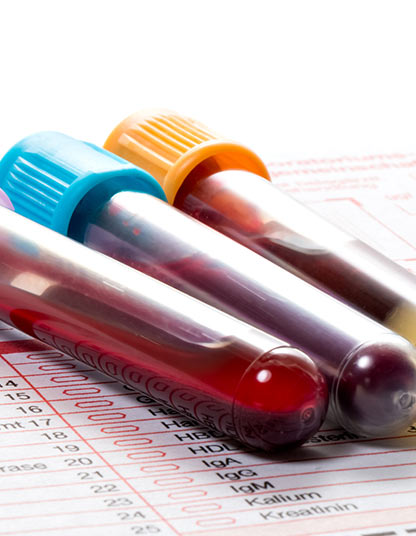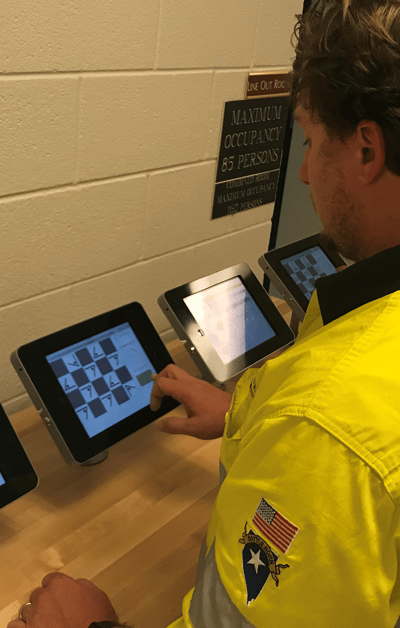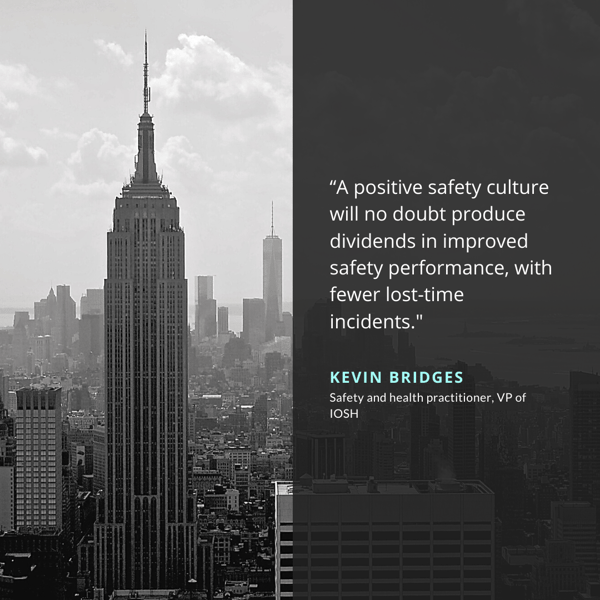Why Do Companies Engage in Workplace Drug Testing?
56% of U.S. employers use pre-employment drug tests, or randomly drug test employees.
![]() These companies pay $3,750,500,000 annually in pre-employment drug testing costs. (Statistic Brain)
These companies pay $3,750,500,000 annually in pre-employment drug testing costs. (Statistic Brain)
Although it’s a hefty investment, for many employers there’s no way to get around workplace drug testing policies. It’s a practice rooted in legal compliance and corporate culture. But it’s well-intentioned.
Especially in safety-sensitive workplaces, drug testing policies exist in order to:
- reveal intoxication
- prevent costly accidents
- prevent employees from undertaking safety-sensitive tasks while impaired
- dissuade employees from engaging in drug use while on the job
At the root of all these rationales is the basic understanding that workplace drug testing helps create and maintain a safer and more productive workplace. (Pinsker)
But does it?
Many researchers now say, not really: “Workplace drug testing policy prevails in the United States—despite the absence of evidence of its usefulness for enhancing safety and productivity—for sociopolitical and symbolic reasons, rather than rational practical ones” (Comer).
They argue that we should also be looking at fatigue, illness, and emotional distress as causes of workplace accidents and injuries (National Safety Council). The following statistics make it apparent that fatigue should not be overlooked in any workplace safety program, whether that program includes random drug testing or not.
More than 43% of workers are sleep-deprived, and those most at risk work the night shift, long shifts or irregular shifts.
Safety performance decreases as employees become tired.
Fatigued worker productivity costs employers $1,200 to $3,100 per employee annually.
Whether you are required to use random workplace drug testing or not, it is important to be aware of its limitations so that you can supplement it with other necessary safety procedures and create a more robust and positive safety culture.
So, here are the 7 disadvantages of random workplace drug testing policy that researchers and workplace safety experts have discovered and that you should be conscious of.
What Are the Disadvantages of Workplace Drug Testing?

Reason Not to Drug Test Employees 1 - Random Workplace Drug Testing is Not in Real Time
“[A random drug test] just tells you that the employee ingested some amount of a particular drug at some undetermined point in time” (Lewis Maltby, President of the National Workrights Institute).
A positive drug test reveals only a potential past condition and not necessarily a present one. This is not helpful when the purpose of drug tests is to dissuade drug use and intoxication while on the job.
Timing is especially important when testing for cannabis. Unlike alcohol, which is water-soluble and whose presence in the blood more accurately reflects current intoxication, the chemical compounds in cannabis can be present in body fluids long after they have been metabolized and long after the psychoactive effects have worn off. This issue has commonly prevented DUI-cannabis charges to lead to successful convictions.
So, urine or blood testing for cannabis use is ineffective in revealing intoxication, preventing accidents, and dissuading drug use while at work. Instead, the strongest indicators of real-time cannabis impairment are behavioral and cognitive measures.
Unsurprisingly, cannabis is the most common cause of positive drug tests in the workplace. And its positivity rate is increasing across all workforces. Between 2014 and 2018, it increased by 24% in the US general workforce. At the same time, the positivity rates for opiates in the general workforce are declining--a 37% decrease between 2015 and 2018.
This means that companies are spending increasing amounts of money on tests that measure the effects of a drug consumed within a wide time frame, and thus may have no implications on workers’ actual level of impairment while at work.
Reason Not to Drug Test Employees 2 -Random Workplace Drug Testing is Not a Safety Measure
“Employers know that [drug testing] doesn’t mean anything. Anyone who smokes pot will just stop for a few days. It’s an empty ritual that nobody wants to be the first to give up” (Maltby).
The fact that workplace drug tests do not measure impairment in real-time also make it impossible for them to be considered a safety measure.
When drug tests are taken before work, they obviously do not detect drug use while actually on the job, nor do they dissuade drug users from taking drugs after the test is done. Thus, they do not improve safety. Instead, job applicants merely take a break from using drugs so they are clean for the pre-employment drug screen.
Insight: In one recent case, a company related to us how they'd been over-reliant on random drug tests until one worker, after having passed his random drug test that morning, went on to cause a fatal accident in the afternoon. In the post-accident drug test, he was positive for cocaine. Further investigation revealed that workers at the company commonly celebrated passing a drug test by taking drugs immediately afterward.
When drug tests are taken after an accident, their purpose as a safety measure is moot. At that point, the test is a matter of course in investigating the accident’s causes, not reducing the victim’s safety risk. Too little, too late.
And especially too little when you get a false positive!
Reason Not to Drug Test Employees 3 -Random Workplace Drug Tests Are Not Always Accurate
False positives on random drug tests are common because certain medications and foods can “replicate the ‘signatures’ of banned substances” (Europcockpit.be).
“Drug testing may be perceived as politically expedient to demonstrate that ‘something’ is being done [but] has proven to be ineffective, costly and potentially prone to ‘false positives’—with negative repercussions for [employees] whilst giving the false impression of safety" (The European Cockpit Association).
Here are 20 common medications known to cause false positives, as listed by GoodRX:
- Amitriptyline (Amitril): An antidepressant.
- Bupropion (Wellbutrin): An antidepressant.
- Dextromethorphan (Robitussin, Delsym): Found in many over-the-counter cough suppressants.
- Diltiazem (Cardizem): Used to treat hypertension (high blood pressure) or to slow heart rate.
- Diphenhydramine (Benadryl): An antihistamine found in allergy medications or sleep aids.
- Ibuprofen (Motrin, Advil) and naproxen (Aleve): Over-the-counter anti-inflammatory pain medications.
- Metformin (Glucophage): A common oral medication for diabetes.
- Fluoxetine (Prozac) and trazodone: Used to treat depression.
- Pseudoephedrine (Sudafed): Used for sinus and nasal congestion.
- Labetalol (Trandate): Used for blood pressure control.
- Methylphenidate (Ritalin): Used to treat ADHD.
- Doxylamine: Found in over-the-counter sleep aids.
- Sertraline (Zoloft): An antidepressant.
- Tramadol (Ultram): Used for pain treatment.
- Quetiapine (Seroquel): An antidepressant.
- Phentermine (Adipex-P): Weight loss medication.
- Oxaprozin (Daypro): Anti-inflammatory medication used to treat arthritis.
- Venlafaxine (Effexor XR): An antidepressant.
- Proton pump inhibitors (omeprazole, esomeprazole, pantoprazole): Used to treat gastroesophageal reflux disease (GERD) and heartburn symptoms.
- Quinolone antibiotics (levofloxacin, ofloxacin): Used to treat urinary tract infections, pneumonia, sinus infections, and more.
So, the presence of a substance detected in body fluid is not necessarily an indicator of impairment while at work.
Reason Not to Drug Test Employees 4 -Random Workplace Drug Tests are Not Sensitive to Change
The legalization or decriminalization of cannabis in various countries, especially for medicinal purposes, has left many companies in a pickle.
With quickly changing laws and conflicting state and federal regulations, the right policies regarding cannabis in the workplace aren’t always obvious.
In such a time of social change and developing scientific research on cannabis use, penalizing workers for having consumed cannabis at some point, for either medical or recreational purposes, often results in a lawsuit.
The possibility of positives and the growing use of medical marijuana further contribute to employee grievances and pushback against workplace drug testing. (Sejits, O'Farell)
Reason Not to Drug Test Employees 5 -Random Workplace Drug Tests are Not Good for Workplace Safety Culture
“The implementation of drug testing programs can lead to resentment and a subsequent increase in grievance rates, deteriorating labor-management relations, decreased morale, and difficulties in attracting and hiring qualified candidates” (Seijts, O’Farrell).
Employees' general dislike of random and pre-employment drug tests stems from the fact that they are focused on catching and punishing wrongdoing. Such a negative and reactive approach to workplace safety typically results from poor management and leadership. When the only recognition for safety performance in a workplace is in the form of reprimand, communication, and rapport between front-line workers and management tends to be poor. (Blair, Spurlock, 2008)
Reason Not to Drug Test Employees 6 - Workplace Drug Tests are Not Comprehensive
“Most people who have accidents on the job are not drug users, and drugs have nothing to do with [most] accidents. Most accidents are caused by fatigue or alcohol" (Maltby).
Workplace drug testing overlooks other forms of impairment, such as those caused by alcohol, fatigue, illness, and even emotional distress. Alcohol tests at work are not as common as drug tests, although many employees who are randomly tested for drugs may also drink regularly or to excess. Further, the effects of alcohol linger long after an alcohol test would be able to detect its presence. For example, although a worker may not be acutely or visibly drunk at work, they may be hungover and neither a random drug test nor an alcohol test will prevent them from undertaking safety-sensitive work.
Drug testing these employees cannot identify any heightened safety risks they pose before they become apparent in lagging indicators. But pre-task or pre-shift impairment testing can do this, and thus allow intervention by supervisors when such circumstances arise.
Reason Not to Drug Test Employees 7 - Workplace Drug Testing Makes it Harder to Hire Qualified Workers
More than half of Americans say they have tried marijuana and 55 million use marijuana weekly. (Washington Post, 2017)
That's a lot. And drug tests that disqualify candidates (or discourage them from even applying) based on if they've had marijuana sometime in the recent past make finding a qualified job candidate a lot more difficult for employers. (Pinsker, 2015)
"What really happens is that bright, young scientist who you want to hire who smokes pot on Saturday was smart enough to drink beer [instead] for two weeks before the drug test because he wants to work for the company" (Lewis Maltby).
And it's not just cannabis users that are penalized. Stories of workers being fired for using prescription medicine while at work are not uncommon. Ironically, in many cases, these prescription medicines are actually meant to enhance the worker's ability to remain focused and productive.
For example, ten years ago, The New York Times reported on the story of a woman who was fired from her job of 22 years after testing positive for a painkiller that her doctor prescribed. (Business Insider, 2015)
The situation is especially lamentable when companies have to fire dedicated and valuable employees in an effort to remain compliant with regulations that do not necessarily improve safety.
Meanwhile, candidates impaired by alcohol, whether currently or in the past, are not subject to the same scrutiny. (Comer, 2000)
The Advantages of Cognitive Impairment Testing
When cognitive impairment testing first entered the market, the price of technology was too high for it to be successfully integrated into workplace safety systems.
Now, however, most people have smartphones, and buying a few tablets or providing Wi-Fi is affordable even for the smallest businesses.
So, is it Time to Abandon Workplace Drug Testing for Impairment Testing?
We can’t say. State, federal, and corporate regulations will take a long time to change and you shouldn’t have to break the law to improve safety in your workplace.
What you can do is use cognitive impairment testing on a daily basis, whilst also drug testing workers when necessary or required.
Here are 6 Advantages Cognitive Impairment Testing has that Workplace Drug Testing Doesn’t:
Impairment testing is Affordable and Accessible
Rather than needing expensive and cumbersome equipment, impairment tests now come in the form of easily-accessed software downloaded onto mobile devices like smartphones or tablet computers, which are ubiquitous and more easily affordable and accessible.
From the Field:
A worker takes the AlertMeter® test on a tablet. The test can also be taken on personal smartphones.
Impairment Testing is Timeless

As cannabis becomes more accepted and legalized, many have stopped referring to it as a drug.
Today’s pharmacies look very different than when workplace drug tests were first introduced.
Our society is also very different.
We take different drugs.
We take more drugs, such as for depression and ADHD.
Depending on what state or county you live, you might even have a different definition of what constitutes a "drug." Cannabis, for example, is now more widely accepted (legally, socially, medically) than ever before and treated similar to tobacco and alcohol.
As a result of this constantly evolving approach to drugs and drug use, employers want alternatives that preclude penalizing valuable employees for their private lives.
Testing for impairment rather than drugs allows workplaces to overcome such legal and social changes by looking at impairment in and of itself.
Is your employee alert, healthy, focused, and fit-for-work? Yes? Then, no further prying needed.
Are they having trouble focusing and staying alert? Then, you may find a cause worthy of investigation. In most cases, that cause won’t be drugs.
From the Field: An employee scored outside his normal range on his pre-shift AlertMeter® test. In their conversation, the supervisor learned that the employee had been drinking heavily the night before and was currently suffering from a hangover.
Impairment Testing is a Preventative Safety Measure
"Impairment testing is the practice of determining which workers in safety-sensitive positions put themselves and others at risk by directly measuring workers’ current fitness for duty. Urine testing, in contrast, attempts to determine which workers have used specific substances known to cause impairment in the relatively recent past" (National Workrights Institute, 2010).
Experts have been advocating in favor of impairment testing over drug testing for many years because workplace drug testing is not a real-time measure, and thus not a useful tool to prevent workplace accidents or injuries.
Impairment testing is able to detect symptoms that are posing a safety risk in the current moment. Thus, managers are able to eliminate risks before accidents happen.
From the field: An employee scored abnormally on two consecutive tests, triggering a notification to a supervisor. A conversation revealed that the employee was having difficulty seeing the shapes on the AlertMeter® screen with his new prescription glasses. The supervisor determined that the employee’s new prescription may not be appropriate, which could present a safety hazard. The supervisor advised that the employee return to the eye doctor.
Impairment Testing is Non-Invasive
“Impairment testing focuses on workplace rather than leisure behavior” (Elaine Beck, Workforce magazine).
In other words, impairment testing works to prevent safety risk because it “focuses primarily on impairment, not on the cause of impairment. The objective of testing is to assess fitness for work, not to detect drug use” (Seijts, G.H. & O’Farrell).
Since impairment testing has the ability to screen out impairment regardless of the cause, it becomes a far more valuable workplace safety tool and one that is much less invasive. (You don’t need to collect your employees’ blood, urine, or hair with impairment testing.)
Measuring impairment regardless of cause means that the manager's focus shifts from an investigation into the private life of an employee to a much more positive concern for his/her safety. This non-invasive approach is appreciated by employees who become part of a positive and caring work environment.
From the Field: After an employee scored abnormally on the AlertMeter® test, the supervisor observed that he was not behaving normally. Conversation revealed that the employee had been working for an extended period in extreme heat and had not been hydrating. The employee was instructed to rest in an air conditioned area and hydrate. A short time later, he scored normally on the AlertMeter® test and was allowed to return to work.
Impairment Testing Can Help Create a Positive Safety Culture

Contrary to the issues posed by workplace drug testing programs, impairment testing has the potential to increase workplace wellness, improve communication between front-line workers and supervisors, and reduce problematic presenteeism.
Presenteeism can cause impaired workers to stubbornly continue safety-sensitive work and can cause contagious workers to spread illness. Impairment testing allows for increased productivity because both presenteeism and absenteeism are balanced and prevented from becoming extreme.
From the Field: An employee who operated a 90-ton crane scored abnormally on two consecutive AlertMeter® tests. When approached by the supervisor, the employee admitted to having been awake all night at the hospital due to a medical emergency with his child, and he decided to come to work to “get his mind off it.” Instead, the employee was sent home with pay.
Impairment Tests Offer A More Comprehensive Measure of Worker Fitness for Duty
Looking at impairment testing allows employers to identify and manage safety risks that cannot be measured in blood or urine samples. Fatigue, for example, is a far more common cause in workplace accidents than drug use. There are also non-illicit medications and drugs that can cause impairment, such as drowsiness, that are not detected in typical employment drug screens although they can be just as dangerous. (Seijts, O’Farrell)
Impairment testing also allows employers to keep factors such as emotional distraction and illness from interfering with safety and productivity.
Finally, alcohol testing can also be encompassed by an impairment test. Current alcohol tests at work are done either through Evidential Breath Testing (EBT), a type of breathalyzer, saliva, or urine testing. A breathalyzer is expensive and involves a lot of training. Saliva and urine testing are invasive, time-consuming, and often yield false positives. An impairment test can be used as a top-screen indicator to identify any potentially intoxicated workers quickly, non-invasively, and cost-effectively so that you don't spend company time and money testing workers who are sober and alert.
From the Field: An employee scored abnormally on two consecutive tests, triggering a notification to a supervisor. In the conversation that followed, the supervisor learned that the employee’s father had passed away the day before.
CONCLUSION
In short, impairment testing, which today has become accessible, affordable, and more sophisticated, is an obvious solution to the many problems posed by workplace drug testing. Where drug testing is too narrow, invasive, expensive, and reactive, impairment testing is proactive, preventative, wide in scope, non-invasive, and can improve productivity and organizational culture.
While we do not recommend doing away with all workplace drug testing, we do recommend implementing impairment testing to complement your existing workplace drug testing program.
AlertMeter® is one of the only existing impairment tests in the world currently available for businesses. It has successfully been used alongside workplace drug testing and, as a result, reduced the cost of drug testing (by 90%), reduced worker’s compensation claims (by 70%) , and increased productivity (by 11%). But most importantly, it’s changed the culture of workplace safety from one of invasiveness, fear, and penalization to one of positivity, caring, and proactiveness.
AlertMeter® is an excellent tool for businesses looking for a real-time impairment testing solution . . . In the age of recreational marijuana, prescription drugs, alcohol use, and workplace fatigue, determining an employee's cognitive ability and readiness for work has become complex and often requires more than a drug testing program alone.
Jim McMillen, Director of Safety Services: Pinnacol Assurance, Colorado State Workers' Compensation Provider
Our drivers are independent workers, which is part of our culture, and we encourage everyone to take the [AlertMeter®] test at any time during their shift so they can make sure they're able to stay focused.
Monte Jensen, SH&E Manager: Savage Services, Midvale, Utah
“We were struggling to hire people who could get in the door and pass a test. I’m pleased to say we’ve been with AlertMeter® now for a few years and what we liked most about how AlertMeter® aligned with our philosophy of the workplace was that culturally, it was a different message and tone than the options we had in drug testing.
The direct benefits of worker’s comp cases going down is very real for us. We were averaging a claim almost on a weekly basis. [After 2 years with AlertMeter®, we’ve reduced drug testing costs by 90%, and reduced worker’s comp cases by 70%.] We’ve also seen a way to hire more thoughtful employees and are benefitting from a productivity uptick that aligns with how long AlertMeter® has been a system for us.”
Jon Young, General Manager: Vforge, Lakewood, Colorado
More Resources:
How This Company Reduced Their Drug Testing Cost by 80%
Drug Testing Methods
Marijuana and Drug Testing
Today, Amazon Announced that it Will Significantly Curb its Use of Pre-employment Drug Testing for Marijuana
Does Your Company Need a WIRE (Workplace Impairment Recognition Expert)?
How Cognitive Impairment Testing Can Improve Your Drug Testing Program
Legalized Marijuana and Workplace Drug Testing: Complete Guide
Cannabis in the Workplace Webinar
Sources:
Beck, E. (2001, February 1). Is the time right for impairment testing? Workforce 80(2): 69–71. Retrieved from http://www.workforce.com/articles/is-the-time-right-for-impairment-testing
Blair, E.H. & Spurlock, B.S. (2008, June). Leading measures of safety performance. [Conference paper]. American Society of Safety Engineers Professional Development Conference and Exhibition.
Comer, D.R. (2000). Employees’ attitudes toward fitness-for-duty testing. Journal of Managerial Issues 12(1): 61–75. Retrieved from http://www.pittstate.edu/econ/jmi.html
European Cockpit Association. (2016). Problematic substance abuse in aviation: Testing & peer support programmes. European Cockpit Association AISBL.
How police test for marijuana DUI in California. (n.d.). Law Offices of Randy Collins. Retrieved from http://www.duiease.com/test-for-marijuana-california/
Katz, J. (2010, March). Rethinking drug testing: For years it’s been a no-brainer on the plant floor, but what do drug screens really tell us? Industry Week 259(3): 16–17.
National Workrights Institute (2010). Impairment testing—Does it work? National Workrights Institute. Retrieved from http://workrights.us/?products=impairment-testing-does-it-work
Pinsker, J. (2015, June 6). Drug testing is basically pointless—here are 3 reasons why companies still do it. Business Insider. Retrieved from http://www.businessinsider.com/drug-testing-is-basically-pointless--here-are-3-reasons-why-companies-still-do-it-2015-6
Pratt, T. (2015, April 19). Marijuana legalization clashes with drug testing in the workplace. The Guardian. Retrieved from https://www.theguardian.com/sustainable-business/2015/apr/19/marijuana-workplace-drug-testing-employers-employees-medical-recreational
Seijts, G. H. & O'Farrell, G. (2005). Urine collection jars versus video games: Perceptions of three stakeholder groups toward drug and impairment testing programs. Journal of Drug Issues 35(4): 885-916. doi:10.1177/002204260603500411
https://www.psychemedics.com/blog/2018/01/surprising-stats-drugs-workplace/
https://www.americansafetycouncil.com/content/osha-10-safety/



